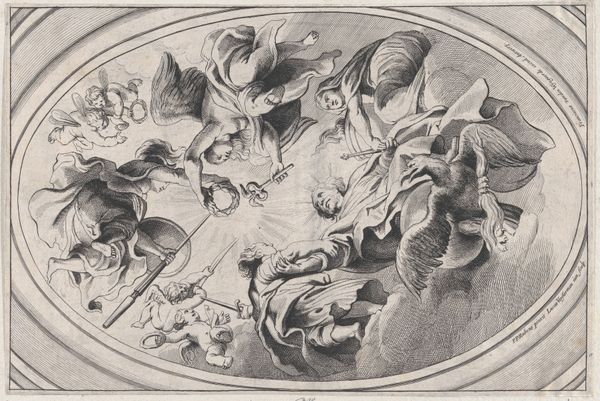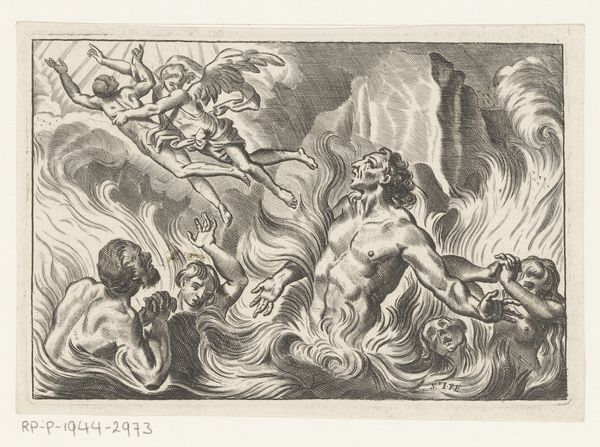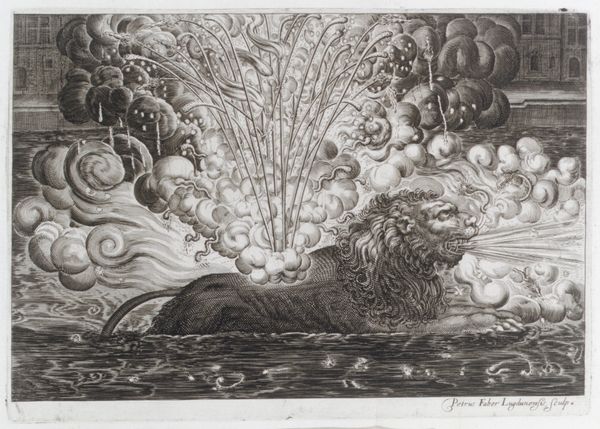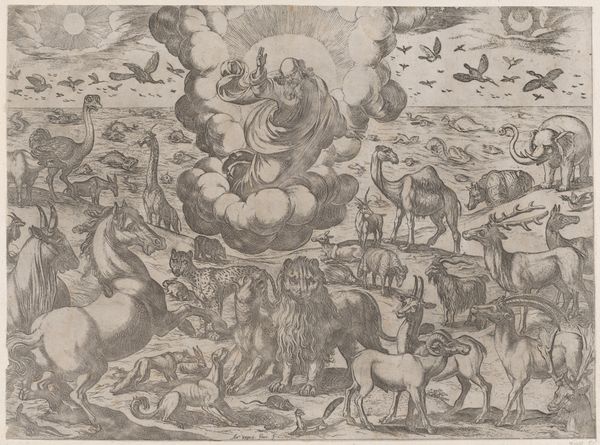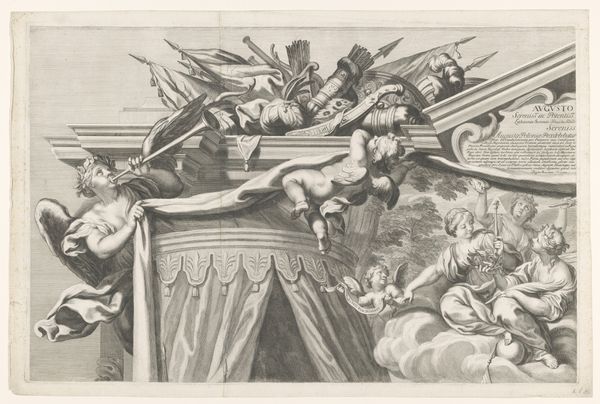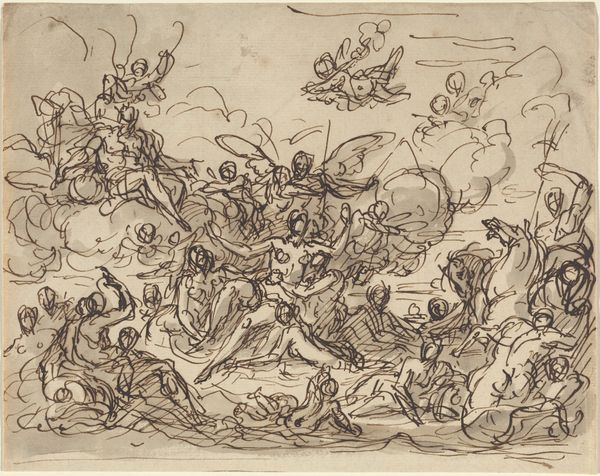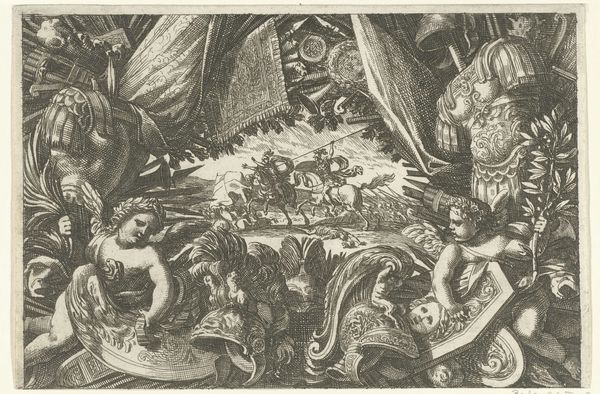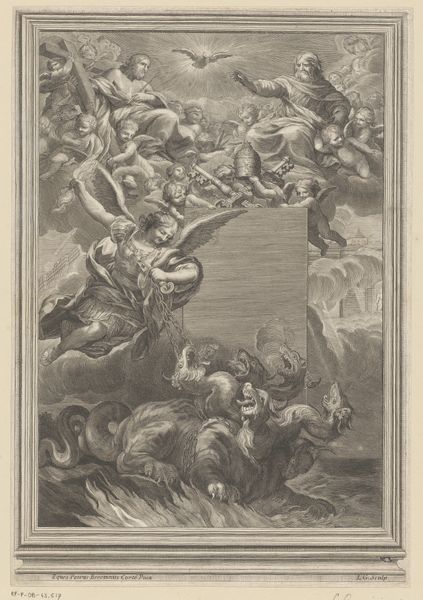
drawing, print, etching, intaglio
#
drawing
#
allegory
#
baroque
#
pen drawing
# print
#
etching
#
intaglio
#
landscape
#
cityscape
#
history-painting
Dimensions: Sheet (Trimmed): 10 1/2 × 17 3/16 in. (26.7 × 43.7 cm)
Copyright: Public Domain
Editor: Here we have Mathäus Küsel's "The Hellmouth, set design from 'Il Pomo D'Oro'," an etching from 1668. The overwhelming darkness and swirling forms are definitely evoking a sense of chaos and dread. What do you see in this piece? Curator: Beyond the literal depiction of hell, I see a powerful commentary on the anxieties of the Baroque era. Think about the religious and political turmoil of the 17th century. This image of a monstrous mouth devouring a city can be interpreted as a metaphor for the destructive forces of war, disease, and maybe even religious intolerance. Do you notice how the devils are actively stoking the flames? Editor: Yes, they seem very busy! The composition, with the hellmouth framing the city, almost makes it feel like a stage. Curator: Exactly! This was, after all, a set design. But that theatricality amplifies its impact. Consider the opera's patrons: often members of the aristocracy, complicit in power structures that created such suffering. This hellmouth isn't just a religious symbol; it’s a mirror reflecting the potential consequences of their actions and inactions. The artist isn't just depicting damnation, but perhaps also critiquing the social and political climate. Editor: So it's not just about good versus evil, but about power and accountability? Curator: Precisely! Art often serves as a vehicle for social commentary, prompting us to examine the forces that shape our world and the roles we play within them. Editor: This has completely changed how I see this image! Curator: Me too! It is always insightful to engage with this artwork in different ways and perspectives.
Comments
No comments
Be the first to comment and join the conversation on the ultimate creative platform.
